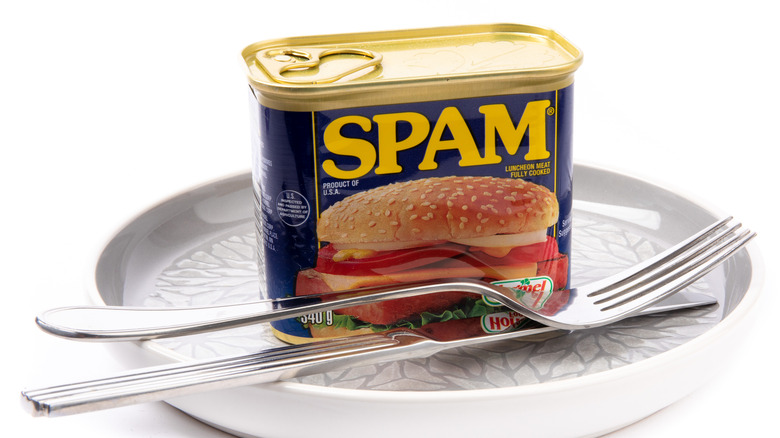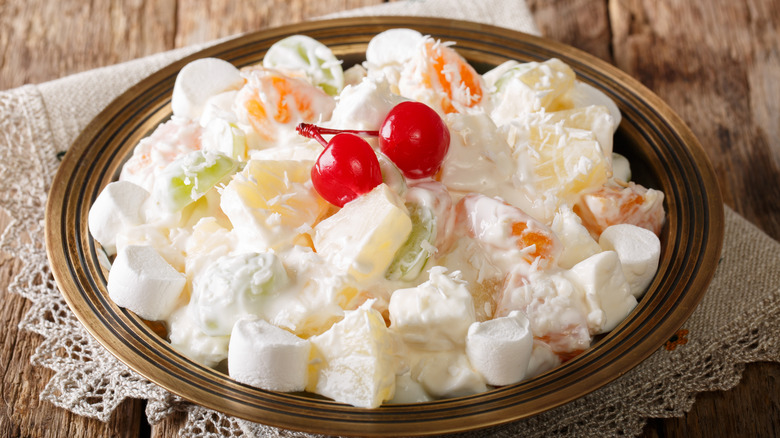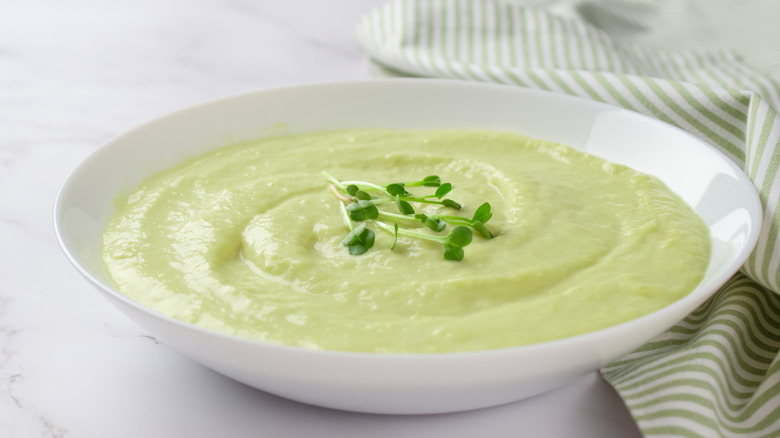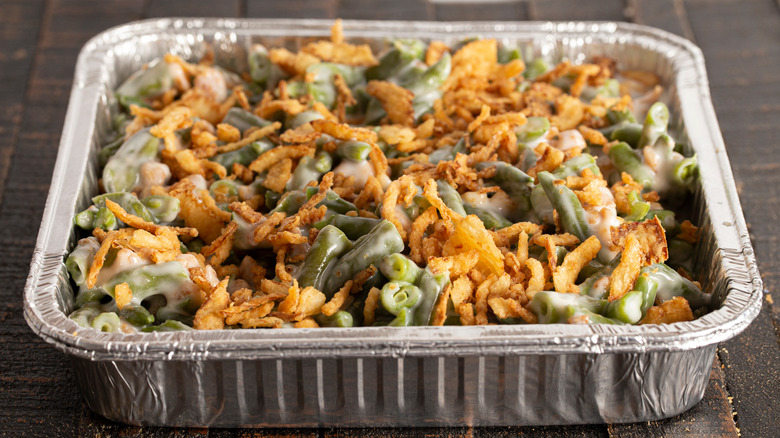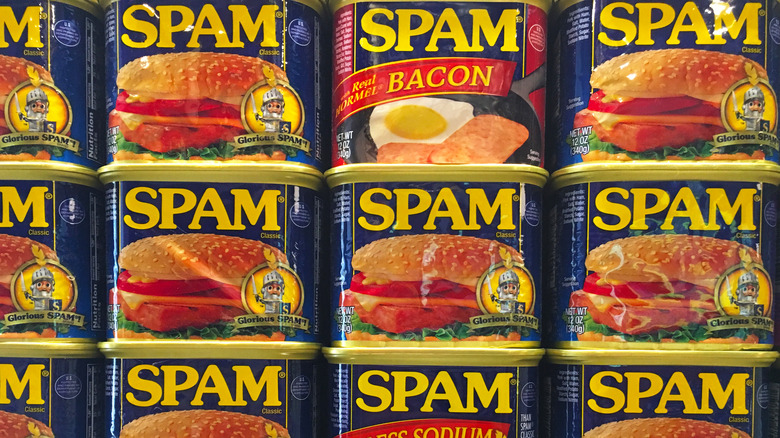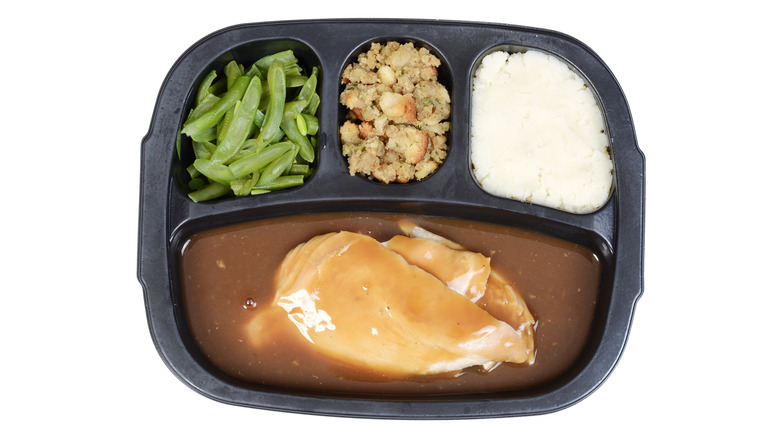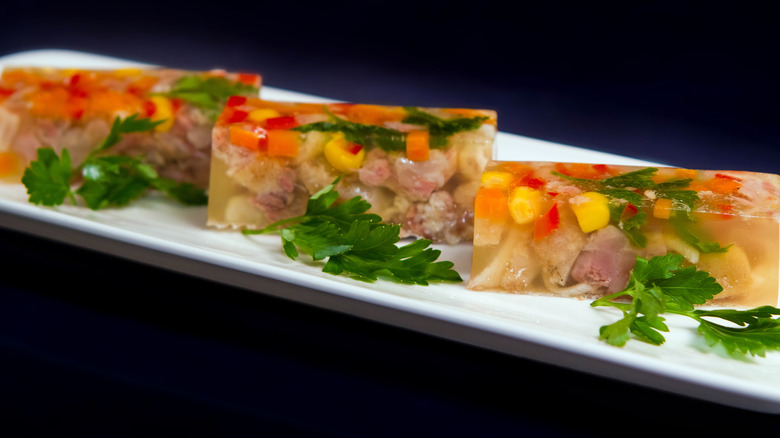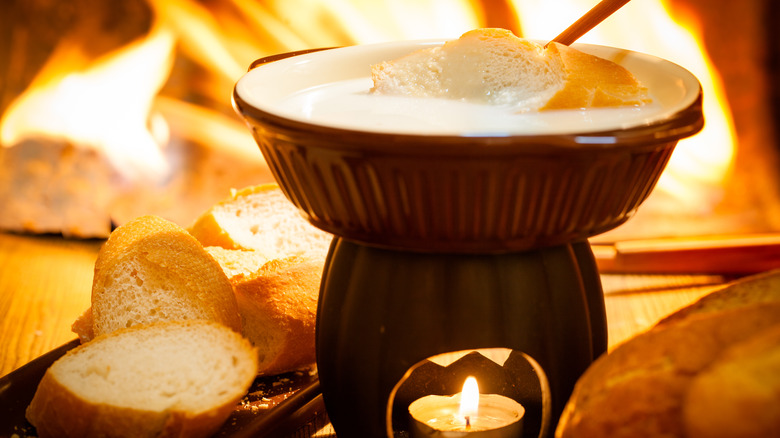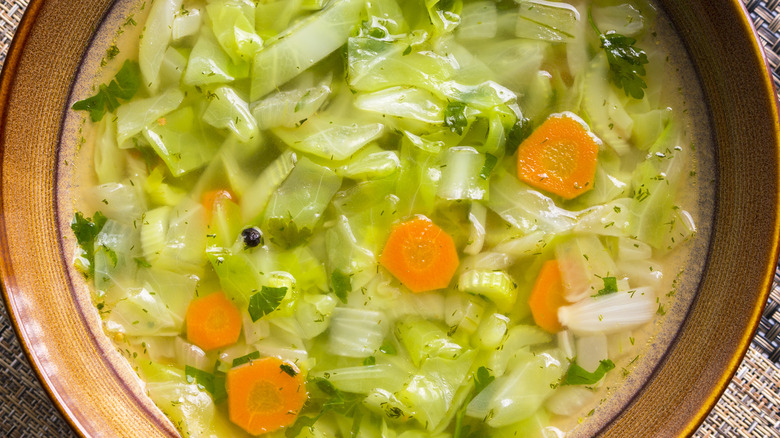Popular Food Fads From The 20th Century
Acai. Avocadoes. Kale. Keto. Plant-based. Probiotics. Quinoa. Today, these food trends dominate health food stores and hip new cafes throughout the western world. A decade ago, bacon-flavored products, energy drinks, and sriracha seemed ubiquitous. Only time will tell which of the current food trends will stick around for decades to come, and which will be out of favor by 2030.
It's difficult to deny that the typical American diet has evolved a lot over the last century or so. The rise of packaged "junk" food and fast food added major convenience to the American lifestyle. More recently, the rise of animal product alternatives has added a bounty of options that were not available 100 years ago. It's difficult to predict the major shifts that are bound to happen to the food industry in the 100 years ahead.
As we munch on our organic, dairy-free, gluten-free, and sustainably sourced snacks, let's take a look back at some of the food trends that came and went during the 1900s. The following fads — from cold soup to canned pork — may have your stomach grumbling or turning, but all of them were once highly fashionable in American food culture.
Ambrosia
At the beginning of the 20th century, sugar was growing increasingly popular in the American diet. Marshmallows were a particular marvel of the time and were notably used in a festive dish called ambrosia salad. The dish was named after a mythical food of the Greek gods that granted immortality to those who consumed it, per Britannica.
Devoid of the healthier characteristics typically associated with a salad, ambrosia salad began as a luxurious combination of coconut, mandarin oranges, and sugar, per Serious Eats. According to the National Post, it was typically served as a side dish, rather than a dessert, with Thanksgiving and Christmas dinners.
The first written record of ambrosia salad appeared in the 1867 cookbook "Dixie Cookery" by Maria Massey Baringer. The dish took advantage of "exotic" ingredients that were inaccessible or unusual prior to the late 19th century. Around the first decade of the 20th century, the salad expanded beyond its three base ingredients to include marshmallows and pineapple, and more closely resembled a fruit salad. A 1905 recipe from Estelle Wilcox's "Original Buckeye Cookbook" also included bananas and strawberries. As the traditional recipe evolved, popular ingredients included sour cream, egg whites, and maraschino cherries. Ambrosia remained a popular holiday dish for a few decades, facilitated by the invention of "marshmallow whip" around World War I.
Vichyssoise
In 1897, Campbell's introduced condensed soups that could be mixed with water to make meals, or used as inexpensive ingredients in various dishes. By 1911, Campbell's soups were being distributed across the United States. They grew into a wildly popular pantry essential throughout the decade.
In 1910, Louis Diat moved to New York City to be the head chef of the Hotel Ritz-Carlton. Seven years later, in 1917, Diat introduced vichyssoise, a cold leek and potato soup. Named after the town of Vichy, France, the dish was inspired by Diat's childhood, during which he would cool down his grandmother's leek and potato soup with cold milk, according to The New Yorker. At the Ritz, he created a more, well, ritzy version, consisting of potato-and-leek puree, heavy cream, and a garnish of chopped chives.
According to Politico, Diat got the idea to serve a cold soup because the Ritz had a rooftop restaurant that called for dishes that could be enjoyed in sweltering New York heat. But diners and hotel guests would request the popular dish in all weather conditions and at all times of year, which prompted Diat to add the soup to the hotel's year-round menu in 1923. Following its introduction in 1917, vichyssoise traveled beyond the Ritz and onto restaurant menus across the country.
Counting calories
Throughout the 1910s and 1920s, scientists examined food composition, identifying vitamins and minerals and popularizing the word "calorie," per Science History. Wartime rationing popularized counting calories, as people tried to get a sufficient number of calories while limiting food intake.
Hourglass figures were en vogue through the Victorian era, but thin frames came fiercely into fashion following World War I. Beginning in 1918, calorie counting was popularized as a diet strategy by a physician named Lulu Hunt Peters, who struggled to lose weight but lost 70 pounds by restricting calories. She promoted calorie counting in diet guides and a syndicated column she wrote. "You should know and also use the word calorie as frequently, or more frequently, than you use the words foot, yard, quart, gallon, and so forth, as measures of length and liquids," Peters wrote in her 1918 book "Diet and Health: With Key to the Calories," which was the first best-selling diet book. "Hereafter you are going to eat calories of food. Instead of saying one slice of bread, or a piece of pie, you will say 100 calories of bread, 350 calories of pie."
Because Peters' calorie-counting process was particularly mathematical, she reserved pages of her book for readers' calorie logs. The general guidelines instructed readers to count out 15 to 20 calories per pound of body weight and to subtract 500 to 1,000 calories from that total, depending on their weight loss goals.
Casserole
During the Great Depression, American households prioritized resourcefulness and thrift when cooking. The popularity of casseroles during the Great Depression was largely due to the fact that the dish supplied a way to use up leftovers, include only small quantities of expensive cuts of meat, and otherwise make the most of cheap ingredients and limit food waste.
According to Andrew F. Smith's "Food and Drink in American History: A 'Full Course' Encyclopedia," the word "casserole" is French for "saucepan." Casseroles typically include meat, poultry, or fish; a starch, such as noodles, potatoes, or rice; vegetables; and some kind of creamy sauce. In 1930, a year after the Depression began, the "Grace Lutheran Ladies Aid Cookbook" was published, per Food and Wine. The book featured the first known "hot dish" recipe, which called for ingredients such as ground beef, macaroni, and canned peas. ("Hot dish" was essentially the Midwestern word for "casserole.")
In 1934, Campbell's debuted its condensed creamed soups, including cream of mushroom, which became the default base for a "hot dish" or casserole. The introduction of Kraft packaged macaroni and cheese dinners during the decade also lent itself to ample casserole recipes, per Encyclopedia. The 1930s brought about classic American casserole recipes such as tuna noodle casserole and green bean casserole, thereby leaving a lasting mark on the standard Thanksgiving dinner.
Spam
In 1937, the Hormel Corporation introduced Spam — canned, rectangular slabs of pork mixed with potato starch, water, salt, sugar, and sodium nitrate, per Eater. According to a 1945 profile of Jay Hormel in The New Yorker, writer Brendan Gill wrote that he "got the distinct impression that being responsible for Spam might be too great a burden on any one man."
The canned meat product quickly picked up speed following its introduction, when the United States military bought large quantities of Spam and other canned meats to feed troops serving in World War II. It was a convenient way to deliver protein-packed meals that did not require refrigeration and could survive for weeks in the heat of the tropical Asian Pacific. While it became more of a side ingredient in later decades, Spam was central to main entrees in the 1940s. Still, the troops themselves were not so pleased about the product. Hormel told The New Yorker that he kept a file of hate mail from American soldiers who were sick of eating Spam up to three times a day. The product also traveled across the pond and was served in school lunches to schoolchildren in postwar Britain.
The popularity of Spam in Hawaii was also a byproduct of World War II. The American government placed unfair regulations and restrictions on Hawaiians. Once the government restricted the deep-sea fishing processes typically helmed by Japanese Americans, Hawaiians were left with limited protein sources, making Spam their go-to source.
The TV dinner
The Swanson TV dinner was the result of a Thanksgiving mishap. In 1953, the Swanson company overcalculated how much turkey they would need to sell to families on Thanksgiving. Following the holiday, the company was left with ten refrigerated train cars holding 260 tons of frozen turkey, according to Smithsonian magazine. According to Adweek, the refrigeration only worked when the trains were moving, so they had to travel between Nebraska and the East Coast over and over until Swanson came up with a solution to the problem.
The solution was reportedly conjured up by a Swanson salesman named Gerry Thomas, who suggested the company serve the turkey as part of frozen dinners alongside classic Thanksgiving side dishes like stuffing and sweet potatoes. Some have disputed that Thomas was part of the idea, and instead credit it to Gilbert and Clarke Swanson, the sons of company founder Carl Swanson. In any case, Swanson sold ten million trays of TV dinners in 1954. Other frozen food companies soon cashed in on the trend, releasing their own versions of the readymade meals.
The release of the TV dinner came at a time when white women were entering the workforce and therefore had less time to cook dinners from scratch. It also coincided with the rapidly growing popularity of watching television as a family activity in middle-class living rooms.
Jell-O salad
Although Jell-O was introduced around the beginning of the twentieth century, the packaged jelly did not reach its fever pitch until the 1960s, according to Serious Eats. During the decade, cooks began serving up "Jell-O salads," which are essentially what they sound like: chopped vegetables — and sometimes meat, fish, and other savory ingredients — suspended in the brightly colored, edible gel. One part of the appeal of jellied salads was that they were not quite as messy as their tossed-salad counterparts. As more women were working and as packaged foods were growing in popularity, instant Jell-O offered a quick, convenient way to dress up veggies and add mileage to leftovers.
A 1960 cookbook called "Knox on Camera Recipes: A Completely New Guide to Gel Cookery" boasted such gelatin-based delicacies as "Green Salad Mold," "Jellied Veal Loaf" and "Molded Avocado and Tuna." The 1964 edition of "The Joy of Cooking" — a standard cookbook of the time — included several gelatin salad recipes. According to How Stuff Works, a 1960s "best of" Jell-O cookbook included recipes titled "Sea Dream" and "Ring Around the Tuna." A dish called "Perfection Salad" consisted of a molded ring of lime- or lemon-flavored Jell-O with coleslaw in the center.
Jell-O introduced savory flavors, including celery and tomato, during the decade, but they did not last long. By the 1970s, salads with dessert-like ingredients were fading out in favor of healthier options.
Fondue
In a way, fondue was the unofficial food of the twentieth-century sexual revolution. On one hand, it was the ideal food for an intimate, cozy, touchy-feely gathering. On the other hand, the warming dish of the Swiss Alps reached its peak — pardon the pun — during the 1970s. This can be credited in part to the Schweizer Kaseunion, or the Swiss Cheese Union.
According to NPR, the Swiss Cheese Union was an "all-powerful group of cheese makers" whose name is often met with disapproval and dismissal in Switzerland. Following World War I, Switzerland had too much cheese, so the country's cheesemakers decided to form a cartel. They set prices and dictated the volume and type of cheese that could be produced. They particularly pushed Emmental, the hole-y cheese known by many as the traditional "Swiss cheese."
In the '50s and '60s, the cartel decided to up the ante and find a way to encourage people to eat surplus cheese by the bucketload. So, in the 1970s, the Swiss Cheese Union heavily pushed the consumption of fondue and published advertising campaigns depicting Swiss skiers celebrating over vats of melted cheese. The indulgent trend caught on throughout the western world. Unfortunately, the Swiss Cheese Union crumbled after the fondue decade. The Swiss government was spending significant amounts of money subsidizing dairy, and allegations of corruption ensued, sending one Swiss cheese official to jail. By the end of the twentieth century, the cheese cartel was no more.
The cabbage soup diet
According to the Washington Post, the "cabbage soup diet" is a one-week program centered around a soup made of cabbage, onion, celery, and green pepper. Individuals following the diet can consume as much of the soup as they please, and the diet allows dieters to eat different types of food to accompany the soup each day. For example, on the first day, they can eat fruit; on the fourth day, they can eat skim milk and bananas; and on the seventh day, they can eat brown rice and fruit juice.
There is a lot of mythology that surrounds the "cabbage soup diet." A common myth is that the diet originated as part of a plan for overweight cardiovascular patients at the Sacred Heart Hospital in Spokane, Washington. A public relations representative told the Washington Post that this story was entirely untrue.
According to Encyclopedia, the diet has several alternate names, including the "TWA Stewardess Diet," the "Model's Diet," and the "Dolly Parton Diet." Early copies of the so-called "Dolly Parton Diet" program surfaced at the dawn of the 1980s. In 1996, her publicists told the Washington Post that the diet had nothing to do with Parton, who had never been on the diet herself. "I tried every diet in the book," Parton once said (via Vanity Fair). "I tried some that weren't in the book. I tried eating the book. It tasted better than most of the diets."
The blood type diet
In 1992 came the release of Francis Ford Coppola's movie "Bram Stoker's Dracula." In 1994 came "Interview with a Vampire," starring Brad Pitt and Kirsten Dunst. With vampires so en vogue at the time, it's no surprise that one of the most popular fad diets of the time was based on blood.
In 1996, Peter D'Adamo, a naturopathic doctor, published the book "Eat Right 4 Your Type." The book argued that readers could lose weight and live longer by following a diet and lifestyle that corresponded to their blood type. According to Harvard Health Publishing, D'Adamo claimed those with type O blood should eat a high-protein diet and engage in high-intensity aerobic exercise, while those with type A blood should avoid meat other than turkey, focus on low-intensity exercise, and meditate. He claimed that those with type B blood avoid chicken, corn, peanuts, and wheat; and that those with type AB blood should avoid chicken, corn, buckwheat, and kidney beans.
D'Adamo's theory was that blood type was related to digestion processes and human evolution. But these theories have been challenged and lack any medical evidence to back them up. In fact, in December 2020, the Journal of the Academy of Nutrition and Dietetics published research that found that blood type makes no difference when it comes to weight loss, metabolism, or cholesterol levels.
